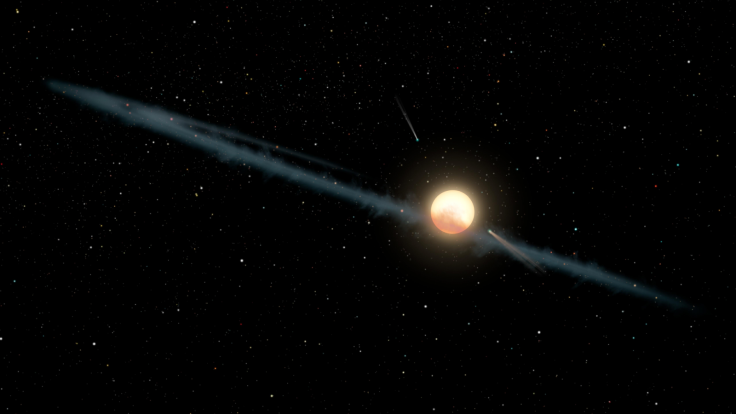The alien megastructure: Has riddle of 'most mysterious star in the universe' been solved?
Tabby's Star appears to be inexplicably dimming and brightening sporadically like no other known star.

Scientists have shed new light on strange observations coming from the "most mysterious star in the universe", according to a new study published in Astrophysical Journal Letters.
KIC 8462852 – otherwise known as Tabby's star - is situated around 1,000 light years from Earth and burns 1,000 degrees hotter than our Sun, which, in itself, is fairly unremarkable.
However, it appears to be inexplicably dimming and brightening sporadically like no other star known to science, prompting researchers to propose several hypotheses to explain the phenomenon – including one which suggests the light patterns are being caused by alien megastructure orbiting the star.
But ET hunters will be disappointed because the results of the new paper appear to debunk the alien hypothesis, suggesting that something is blocking the light coming from the star.
"Dust is most likely the reason why the star's light appears to dim and brighten," said Tabetha Boyaijian from Louisiana State University (LSU).
"The new data shows that different colours of light are being blocked at different intensities. Therefore, whatever is passing between us and the star is not opaque, as would be expected from a planet or alien megastructure."
The new findings come after more than 1,700 people donated over $100,000 to a Kickstarter campaign supporting further observations of the star, so compelling was the mystery surrounding it.
Between March 2016 and December 2017, scientists watched the star closely, observing four distinct episodes when the star's light dipped.
This kind of seemingly random dimming has never been seen in any other star in the universe and scientists have been unable to predict how long these episodes would last or how much light the star would appear to lose. To date, the star has been observed losing around 22% of its normal brightness.
The researchers say that the manner in which the star is being studied indicates that we are entering a new era of astronomy.
"We're gathering so much data on a single target," said Tyler Ellis from LSU. "This project is reflective of changes in astronomy with the access to this flood of data."
The star's unusual behaviour was first detected by a group of citizen scientists, known as the Planet Hunters, who were examining large volumes of data from Nasa's Kepler mission.
"If it wasn't for people with an unbiased look on our universe, this unusual star would have been overlooked," Boyajian said. "Again, without the public support for this dedicated observing run, we would not have this large amount of data."





















